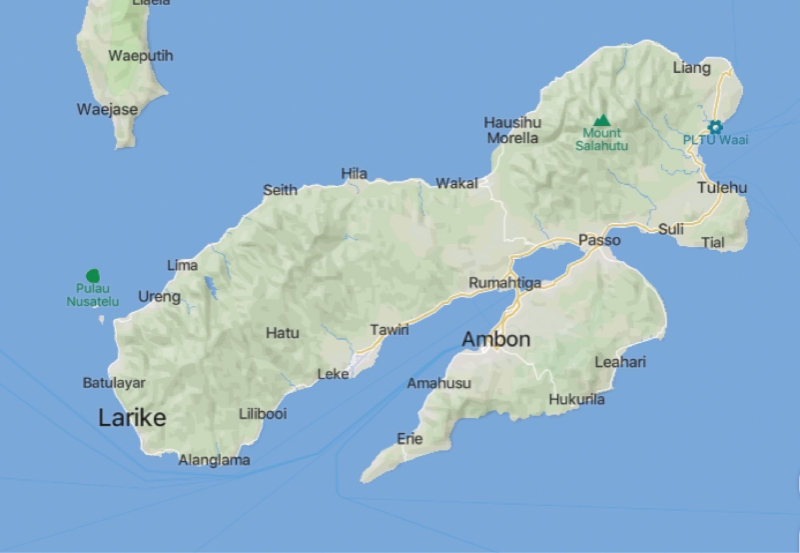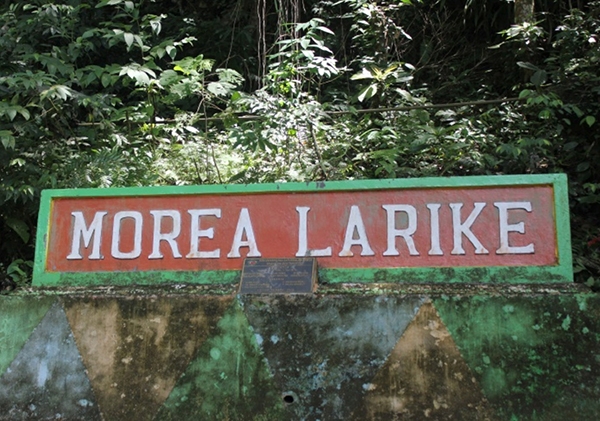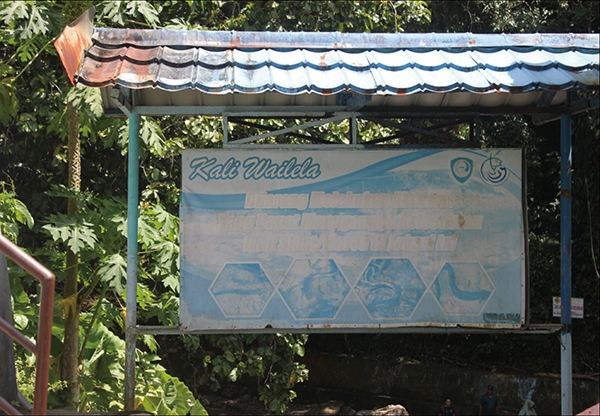Ocean Newsletter
No.588 February 5, 2025
-
Transformative Solutions for Advancing Sustainable Water and Ocean Governance in East Asia
Nancy BERMAS (Regional Project Manager, GEF/UNDP/ASEAN Integrated River Basin Management Project, PEMSEA Resource Facility)
Recognized as a regional model for water and ocean governance, the Partnerships in Environmental Management for the Seas of East Asia (PEMSEA) evolved from a long-running project-based entity into a self-sustaining international organization with legal personality with a mission to foster and sustain healthy and resilient coasts and ocean, communities, and economies at regional, national and local levels across the East Asian Seas (EAS) through integrated management solutions and partnerships under the framework of the Sustainable Development Strategy for the Seas of East Asia (SDS-SEA) that 14 countries in the EAS region have adopted.
-
The Need for Marine Spatial Planning: Global Trends and Japan's Future
WAKITA Kazumi (Professor, School of Marine Science and Technology, Tokai University)
Future oriented (marine) zoning maps, which are the result of marine spatial planning, will not only be useful for fair and efficient responses to new uses such as offshore wind power generation, but after the BBNJ Agreement comes into effect and protected areas are established in the areas beyond national jurisdiction it will also be necessary for considering consistency with the zoning maps of countries with adjacent EEZs. In order to discuss the use and conservation of the entire world's oceans on an equal footing with other countries, it is hoped that Japan will also engage in marine spatial planning that includes its EEZ.
-
The Larike Village Giant Eels Protected Area And How It Might Serve As A Model For The Region’s Sustainable Development
B.G. HUTUBESSY (MSc, Department of Aquaculture, Faculty of Fisheries and Marine Science, Pattimura University), J.W. MOSSE (Professor, Department of Aquaculture, Faculty of Fisheries and Marine Science, Pattimura University)
Larike Village, located in Indonesia, is renowned for its unique conservation efforts, particularly the protection of its giant eels. The Larike Village Giant Eels Protected Area is an example of community-based conservation, where local communities play a crucial role in preserving biodiversity and promoting sustainable development.
-
Energy Transition in Pacific Small Island Developing States (PSIDS) –OTEC and a “PALM Hybrid Model”
T. Suka MANGISI (Ambassador, the Kingdom of Tonga to Japan / PICAG Chairperson), Yukino SAIGO (Former Intern Advisor, the Embassy of the Kingdom of Tonga to Japan / Student, School of International and Area Studies, Tokyo University of Foreign Affairs)
It is important for Pacific Small Island Developing States (PSIDS) to realize the transition to renewable energy. In the Pacific Islands, there is great potential for ocean thermal energy conversion (OTEC), which takes advantage of the ocean's characteristics, but in the short term the need is clear for distributed renewable energy sources_ including OTEC, such as solar and wind power, as well as batteries, in what might be called the "PALM hybrid model." Sharing Japan's "technology, know-how, and funds" is the key to solving the issue of development costs.
The Larike Village Giant Eels Protected Area And How It Might Serve As A Model For The Region’s Sustainable Development
KEYWORDS
giant eels protected area / community-based conservation activities / ecotourism
B.G. HUTUBESSY (MSc, Department of Aquaculture, Faculty of Fisheries and Marine Science, Pattimura University)/J.W. MOSSE (Professor, Department of Aquaculture, Faculty of Fisheries and Marine Science, Pattimura University)
Larike Village, located in Indonesia, is renowned for its unique conservation efforts, particularly the protection of its giant eels. The Larike Village Giant Eels Protected Area is an example of community-based conservation, where local communities play a crucial role in preserving biodiversity and promoting sustainable development.
Larike Village
Larike village is located in the southwest of Ambon Island, facing directly to Banda Sea (Figure 1). The Population of the village is about 6000 people, domiciled at Larike high part and Larike low part. A tributary across the village is the habitat of giant short fin eels, the Anguilla bicolor, which can be found in abundance. The giant eels gather in a “pool’ under some big rocks close to human activities around the water such as dish and clothes washing, and bathing. Meanwhile, the smaller eels (yellow eels and silver eels) are rarely seen swimming around.
The existence of giant eel in Larike tributary was noticed a very long time in the past by our ancestors. There was not a specific story or legend about the existence of giant eels. Some of the villagers caught and ate the eels as additional protein intake, as did other people outside Larike. After the social conflict occurred in Ambon City in 1999, people were terrified to travel far from their village. They went to neighborhood villages for sightseeing. When they found the giant eels in Larike, the uniqueness of this creature was widely and quickly known all over the island and other countries. Since then, people in Larike started to realize that the giant eels were a blessing for the community. Around 2004, the giant eels became famous, promoted by people who had visited Larike village.
The existence of giant eel in Larike tributary was noticed a very long time in the past by our ancestors. There was not a specific story or legend about the existence of giant eels. Some of the villagers caught and ate the eels as additional protein intake, as did other people outside Larike. After the social conflict occurred in Ambon City in 1999, people were terrified to travel far from their village. They went to neighborhood villages for sightseeing. When they found the giant eels in Larike, the uniqueness of this creature was widely and quickly known all over the island and other countries. Since then, people in Larike started to realize that the giant eels were a blessing for the community. Around 2004, the giant eels became famous, promoted by people who had visited Larike village.


Figure1. The map of Larike Village and the site of Giant Eels’ pool
Community Involvement
The local community's engagement in conservation activities ensures that traditional knowledge and cultural values are respected and integrated into wildlife management. By involving locals, the project fosters a sense of ownership and responsibility towards the environment. The community understands that by protecting the eels for eco-tourism, the value of hospitality and friendship (silahturahim) is augmented among locals and visitors. Visitors appreciate the efforts to protect the eels by not disturbing them and not throwing garbage into the water.

Figure2. A sign board placed at the entrance to giant eel’s pool in Larike tributary: Do not carry out activities that interfere with the Eels sustainability.
Eco-Tourism
Eco-tourism provides an alternative source of income for the community, reducing reliance on activities that may harm the environment. Economically, the giant eel’s eco-tourism provides incomes not just for the village but also for the community. The income earned from the tourist free donation is about 3 to 4 million rupiah per month. Profits also come from the selling of fish used as attractors. Women in the village sell food and drinks such as local fruits, noodles, homemade snacks, tea, coffee and fresh drinks to gain additional income
The income from visitor donations is managed for Larike village development after 10% of the income is dedicated to mosque construction. The spiritual belief of the “tenth” supports the community understanding that conserving the giant eels will also conserve their faith.
The income from visitor donations is managed for Larike village development after 10% of the income is dedicated to mosque construction. The spiritual belief of the “tenth” supports the community understanding that conserving the giant eels will also conserve their faith.
Sustainable Practices
The tropical rainforest surrounding Larike tributary consists of economical long-lived plants producing fruits and nuts. Forest products utilized by residents are mango, manggustan, Lanzone, jackfruit, durian, breadfruit, nutmeg, cloves, walnuts and others. There are almost no forest logging activities. The residents’ dependence on the forest has unwittingly preserved it, which has had an impact on the availability of water and the health of the spring.
Eels, particularly in freshwater ecosystems, play a crucial role in maintaining the balance of aquatic environments. They are often indicators of ecosystem health, as their presence can signify clean water and a balanced food web. In the context of Larike Village, the protection of eels may reflect a broader commitment to preserving local water sources and the adjacent rain forest areas. The intertwining of these ecosystems supports diverse flora and fauna, making the eels vital to the biodiversity of the region. Freshwater eels, particularly species such as Anguilla bicolor and Anguilla marmorata, serve as vital indicators of ecosystem health due to their complex life cycles and sensitivities to environmental changes. As migratory species, eels require both freshwater and marine habitats, making them susceptible to alterations in water quality and habitat degradation. The prohibition of taking river rocks, even though it has a good selling price for construction, supports the traditional knowledge of people in Larike to provide hiding spots during the stages of elver and yellow eel and let them grow larger to replace the giant eels that will leave freshwater to spawn in the deep ocean (Banda Sea).
In summary, the Larike Village Giant Eels Protected Area showcases how traditional conservation and community involvement can drive sustainable development, offering a template that other regions in Indonesia and beyond can adapt for preserving their natural heritage while promoting economic well-being.
Protection of giant eel has multiple meanings. Economically, the village of Larike gains benefit and income. Socially, it creates friendship and hospitality between visitors and villagers. Spiritually, the place of worship is well-preserved. Environmentally, a cycle of protection is formed, where protection of giant eels means protecting the water as the basic need of the community, and also means maintaining the forest that provides flora and fauna for the community.
Eels, particularly in freshwater ecosystems, play a crucial role in maintaining the balance of aquatic environments. They are often indicators of ecosystem health, as their presence can signify clean water and a balanced food web. In the context of Larike Village, the protection of eels may reflect a broader commitment to preserving local water sources and the adjacent rain forest areas. The intertwining of these ecosystems supports diverse flora and fauna, making the eels vital to the biodiversity of the region. Freshwater eels, particularly species such as Anguilla bicolor and Anguilla marmorata, serve as vital indicators of ecosystem health due to their complex life cycles and sensitivities to environmental changes. As migratory species, eels require both freshwater and marine habitats, making them susceptible to alterations in water quality and habitat degradation. The prohibition of taking river rocks, even though it has a good selling price for construction, supports the traditional knowledge of people in Larike to provide hiding spots during the stages of elver and yellow eel and let them grow larger to replace the giant eels that will leave freshwater to spawn in the deep ocean (Banda Sea).
In summary, the Larike Village Giant Eels Protected Area showcases how traditional conservation and community involvement can drive sustainable development, offering a template that other regions in Indonesia and beyond can adapt for preserving their natural heritage while promoting economic well-being.
Protection of giant eel has multiple meanings. Economically, the village of Larike gains benefit and income. Socially, it creates friendship and hospitality between visitors and villagers. Spiritually, the place of worship is well-preserved. Environmentally, a cycle of protection is formed, where protection of giant eels means protecting the water as the basic need of the community, and also means maintaining the forest that provides flora and fauna for the community.

Figure3. Giant eels in Larike Tributary
